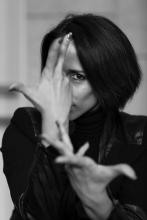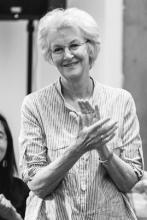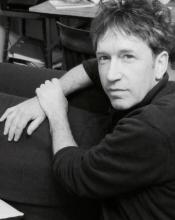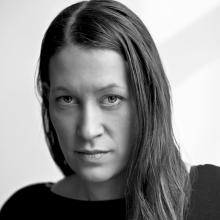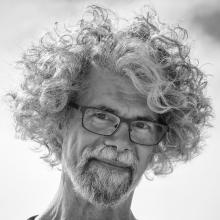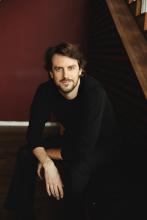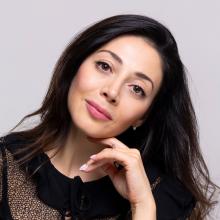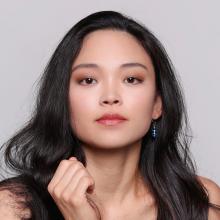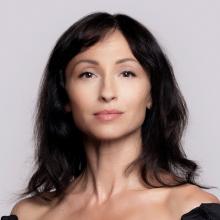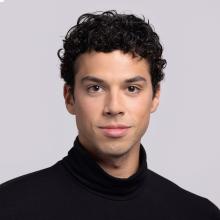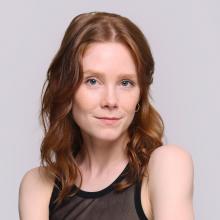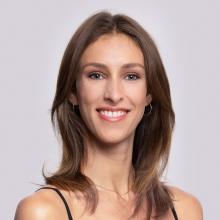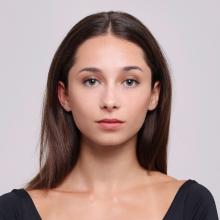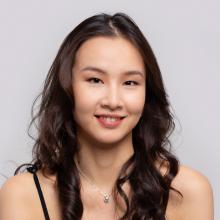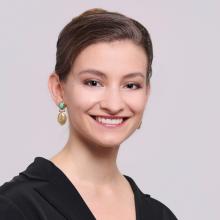Frida
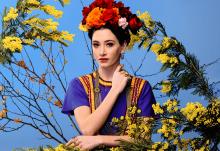
Credits
Voorstellingsinformatie
Credits
Concept, libretto, choreography
Annabelle Lopez Ochoa
Dramaturgy en libretto
Nancy Meckler
Music
Peter Salem – Frida (2020)
Music on tape
La Llorona; Noches de Ahuatepec, composed byChavela Vargas; Adoro, composed by Armando Manzanero; Que te vaya bonito, composed byJosé Alfredo Jiménez Sandoval
Uitvoering: Chavela Vargas
Set and costume design
Dieuweke van Reij
Lighting design
Michael Mazzola
Assistant to the choreographer
Luis Torres
Ballet masters
Michele Jimenez, Larissa Lezhnina, Judy Maelor Thomas, Jozef Varga
Musical accompaniment
Dutch Ballet Orchestra
Conductor
Matthew Rowe, from 16 February Johannes Witt
With cooperation of
The students and pupils of the Dutch National Ballet Academy (Amsterdam University of the Arts)
Staging students of the Dutch National Ballet Academy
Marion Vijn
World premiere
6 February 2020, Dutch National Ballet, Dutch National Opera & Ballet, Amsterdam
Set, costumes, props. wigs and make-up; stagecraft, lighting, and audio
Technical department of Dutch National Opera & Ballet
Production manager
Joshua de Kuyper
Stage managers
Kees Prince
Pieter Heebink
Production supervisor
Gerko Min
First carpenter
Jeroen Jaspers
Lighting supervisor
Wijnand van der Horst
Lighting manager
Angela Leuthold
Follow spotters
Panos Mitsopoulos, Carola Robert, Marleen van Veen, Anton Shirkin
Follow spotters coordinator
Ariane Kamminga
Sound technicians
Raymond Roggekamp
Jannes Noorman
Props manager
Remko Holleboom
Costume productions
Atelier Martine Douma, Amanda Barrow Costumes, Fred van Gestel, Das Gewand, Esther Datema, Sarah van der Heuvel, Atelier Këx, Ute & Rainer Schoppe, Esther Scholten, Michel Diederich, Astrid Kuru, Linda Molenaar, Isha Steward, Lisa Kaimer, Fatiha Lhajoui
Assistant costume production
Eddie Grundy
First dresser
Andrei Brejs
First make-up artist
Barbel Scheidt
Orchestra inspector
David Eijlander
Introductions
Jacq. Algra
Lin van Ellinckhuijsen
Total duration
Two hours and five minutes, including one interval
The basis of this choreography is Broken Wings, a production by English National Ballet, which premiered at London’s Sadler’s Wells Theatre on 13 April 2016.
Dutch Ballet Orchestra
First violin
Sarah Oates
Cordelia Paw
Kotaro Ishikawa
Suzanne Huynen
Robert Cekov
Jan Eelco Prins
Tinta Schmidt von Altenstadt
Majda Varga-Beijer
Sarah Lynn Huizing
Anita Jongerman
Phoebe Tarleton
Arwen Terlou
Inger van Vliet
Second violin
Janneke van Prooijen
Yumi Goto
Willy Ebbens
Christiane Belt
Sonja Helasvuo
Tineke de Jong
Marina Meerson
Alexander Pavtchinskii
Lena ter Schegget
Francesco Vulcano
Viola
Naomi Peters
Arwen Salama-van der Burg
Maria Ferschtman
Joël Waterman
Eduard Ataev
Giles Francis
Frank Goossens
Wouter Huizinga
Cello
Artur Trajko
Lies Schrier
Evelien Prakke
Willemiek Tavenier
Wijnand Hulst
Oliver Parr
Xandra Rotteveel
Double bass
Lucía Mateo Calvo
Annelies Hemmes
Julián Sarmiento
Flute
Sarah Ouakrat
Marie-Cécile de Wit
Oboe
Juan Esteban Mendoza Bisogni
Vincent van Wijk
Clarinet
Ina Hesse
Joris Wiener
Bassoon
Janet Morgan
Maud van Daal
Horn
Christiaan Beumer
Ward Assmann
Trumpet
Gertjan Loot
Erik Torrenga
Trombone
Bram Peeters
Marijn Migchielsen
Percussion
Richard Jansen
Tim van Klompenburg
René Oussoren
Arjan Roos
Koen Slootmans
Harp
Jet Sprenkels
Piano
Pauline Post
Synthesizer
Jonathan Waleson
Guitar
Paul van Utrecht
Synopsis
Verhaal
Synopsis
Act one
Scene 1: overture
It is the Day of the Dead. Skeletons sit on top of a black cube. They begin to tell the story of a young girl called Frida Kahlo. Frida is brazen and lively, and knows what she wants.
Scene 2: Frida and Alejandro
The young Frida is in love with Alejandro Gomez Arias. They dance blissfully and are blind to the dangers surrounding them. The traffic around them gets busier and busier. Frida has a bus accident and is seriously injured.
Scene 3: bedridden
Frida is bedridden for over a year. The Deer appears; an alter ego that helps her when she feels lonely.
Scene 4: male Fridas
Frida paints many self-portraits, which are represented by ten male Fridas. In traditional Tehuana costume, Frida shows her ‘mestiza’ origin and expresses her feminist and anti-colonial ideals.
Scene 5: Diego Rivera
Diego Rivera is a famous Mexican painter of impressive wall paintings. Frida visits him and shows him a few of her paintings. She asks Diego whether he thinks she has enough talent.
Scene 6: Frida and Diego
Frida and Diego fall in love and get married. The lovers’ duet ends abruptly, as Frida has extreme pain in her damaged leg and her back.
Scene 7: Diego’s infidelity
Diego is at work in his studio and is frequently visited by models there. Frida, meanwhile, is in hospital and knows that Diego is cheating on her.
Scene 8: hallucination
Frida is given morphine for the pain. Depressed by her mental and emotional pain, she starts to hallucinate.
Scene 9: longing for a child and miscarriage
The Deer and Frida are in the middle of a forest of red umbilical cords. Here she has a vision of a young girl. Frida longs to be a mother, but she has multiple miscarriages.
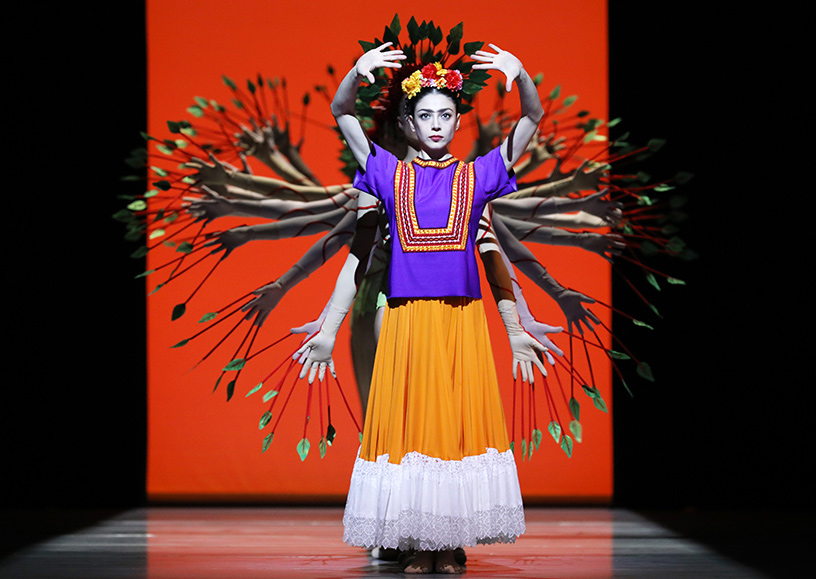
Act two
Scene 10: prologue
Frida once said, ‘There were two big accidents in my life. The bus accident and Diego. Diego was the worst.’
Scene 11: roots
In this painting, Frida portrays herself with an open ribcage sprouting a vine, which symbolises her deep desire for a child.
Scene 12: America
Frida and Diego travel to the United States, where Diego has several assignments. Diego gets plenty of attention and often leaves Frida alone in solitude.
Scene 13: Frida and her lovers
Frida also has many lovers, both men and women, including the famous artist Josephine Baker.
Scene 14: Adoro
Diego regains Frida’s love as they dance and celebrate their Mexican roots. They decide to travel back to Mexico, away from grey, concrete America.
Scene 15: decline
Frida and Diego are back in Mexico. Frida’s health declines rapidly while Diego withdraws into his studio more and more often. To pay for all her medical treatment, Frida paints increasingly large works, in which she makes her pain and sadness tangible, including The Two Fridas and The Broken Column.
Scene 16: Diego and Cristina
A mariachi band enters. Diego begins an affair with Frida’s sister Cristina. Frida finds out and is furious. She feels betrayed and cuts off her long hair.
Scene 17: ‘I hope the exit is joyful and I hope never to return’
Frida suffers increasingly deep depressions and becomes more and more dependent on painkillers. She can barely paint any more and no longer goes outdoors. She hopes that Diego will miss her if she were to commit suicide. On 13 July 1954, Frida Kahlo dies at the age of 47.
“Why do I need feet? I have wings to fly.”
Frida Kahlo
Cast sheet
Please note that casting is subject to change right up to the performance.
‘Frida was so much more than just her pain and misfortune’
Interview with choreographer Annabelle Lopez Ochoa
‘Frida was so much more than just her pain and misfortune’
Shortly before the world ‘shut down’ at the beginning of 2020 as a result of the corona pandemic, Dutch National Ballet presented Frida: a colourful yet also impressive ode to the life of the famous Mexican artist Frida Kahlo. Choreographer Annabelle Lopez Ochoa had previously created Broken Wings, a short one-act ballet about Kahlo’s tragic life, but she says the full-length Frida gave her “the opportunity to add deeper layers to it, and to further develop emotions like loneliness and obsessive love.”
“Wow, I want to be a woman like that. That’s the sort of attitude to life I’d like to have.” These were the thoughts that overwhelmed Annabelle Lopez Ochoa twenty years ago, when she watched the film Frida, directed by Julie Taymor. Actually, she saw it by chance, when her husband Titus brought home a DVD of the film, which deals with the turbulent life of Frida Kahlo.
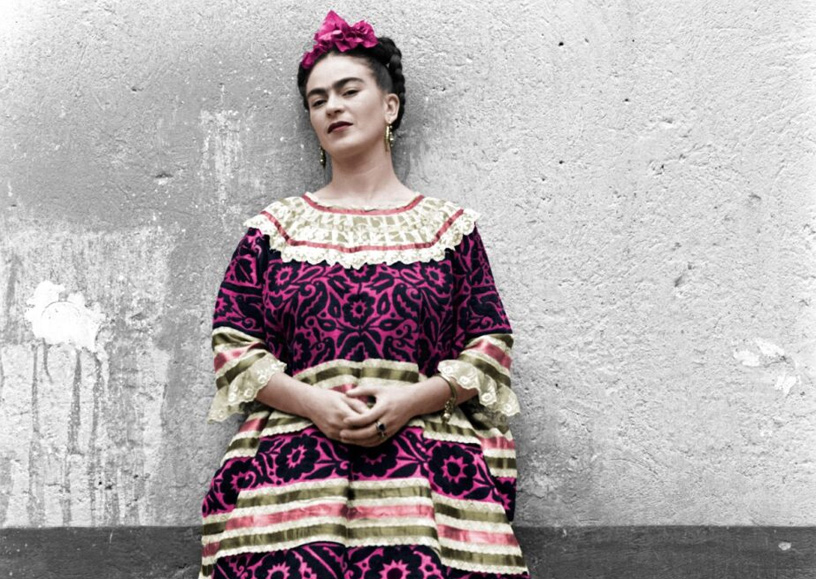
“Quite honestly, I didn’t really appreciate her before that. I was familiar with her paintings, of course, but all those portraits she painted of herself gave me the impression she was quite self-centred. Moreover, the rather crude, two-dimensional style of her work didn’t appeal to me either. But the film suddenly made me see it all very differently. I was deeply moved by the why of her paintings, by how this woman succeeded in transforming her physical immobility and constant pain into art, by her enormous humour, which she managed to hold on to despite all the setbacks, and by her passionate, obsessive love for Diego Rivera – the couple couldn’t do without one another, but actually they couldn’t live together either. And the music in the film certainly contributed to my admiration as well: Mexican rancheras sung by Chavela Vargas, which was music I grew up with as a child.”
Mexicanismo
Lopez Ochoa (50) – daughter of a Colombian father and a Belgian mother – also discovered it was not without reason that Kahlo chose to paint in that colourful, two-dimensional style and to continually cloak herself in a distinctive variant of the colourful Mexican traditional costume. “She deliberately chose to pay tribute to Mexicanismo. She wasn’t fighting for herself, but for her culture. That touches me. As ‘half Indian’, as a ‘mestiza’, I grew up in a white world. I still remember well that when I graduated from the Royal Ballet School in Antwerp, the director of Ballet Vlaanderen at the time told me that a classical ballerina ought to be white. That’s partly why I’ve spent my whole life camouflaging my colour, as it were. And then, suddenly, you have Frida: a woman who doesn’t camouflage or hide anything, but is open instead and fights for her origin and culture.”
Damned and doomed
Yet the idea of choreographing a work about Kahlo’s life may never have occurred to her if Tamara Rojo, then artistic director of English National Ballet, hadn’t asked her in 2016 to make a theatrical ballet about a damned and doomed woman. It was intended for the programme She Said, comprising only works by female choreographers.
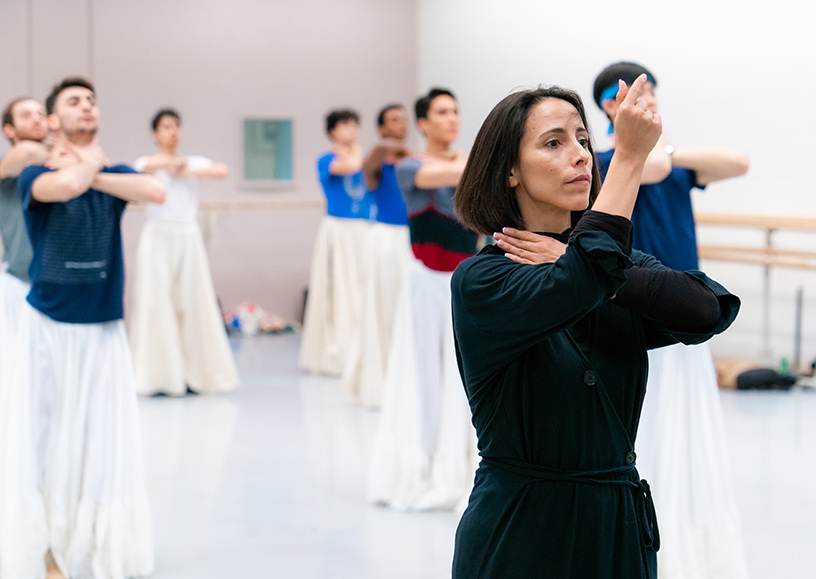
Lopez Ochoa says, “Tamara gave me a list of names of around ten women, many of whom were linked to British history, but none of them really appealed to me. So in the following weeks, I started studying them in more depth, and meanwhile the name Frida Kahlo kept popping into my head, but unfortunately she wasn’t on the list. Eventually, I went to Tamara and said, ‘Sorry, but it has to be Frida Kahlo’. And as it turned out, Tamara was a big fan of hers and loved the idea immediately.”
Expressive surrealism
After that, things moved fast. “I wrote the first version of the script in just one evening. It helped enormously that you can soon leave the reality of her story behind you, and you can step away from the anecdotal and focus instead on the surreal way in which that reality took shape in her paintings. That expressive surrealism also lends itself very well to the poetic world of dance.”
And then the concept for the choreography also arose almost as a matter of course. “The big question was: what do you do with a woman who spent much of her life in bed or in a wheelchair? So I needed a bed, and I imagined that bed in a cube; a cube with doors on all sides that open one at a time and then, like paintings, portray an aspect of her life or a place in it.”
The premiere of Broken Wings, with Tamara Rojo as Frida and Irek Mukhamedov in the role of Diego Rivera, was a hit. “It’s Annabelle Lopez Ochoa’s Broken Wings that makes the programme a success”, “What better way to open a showcase of female creativity than with Annabelle Lopez Ochoa’s Broken Wings, an exuberant portrayal of the troubled life of Frida Kahlo?” and “A beautiful and poignant spectacle”, wrote the British press.
“But ten days before the premiere, I felt that the piece should actually be a full-length work”, says Lopez Ochoa. “Too much happened in the ballet in too short a time. Before you knew it, Frida was dead.” When Ted Brandsen gave her the opportunity in 2020 to develop her ideas in a new, large-scale, full-length production, she says it was ‘really a dream come true’.
Wounded deer
Frida, like Broken Wings, does not give a chronological story of Kahlo’s life from start to finish. “Although I do portray the most intense moments that form the basis for her best-known paintings, I’m mainly interested in her emotions and experiences.”
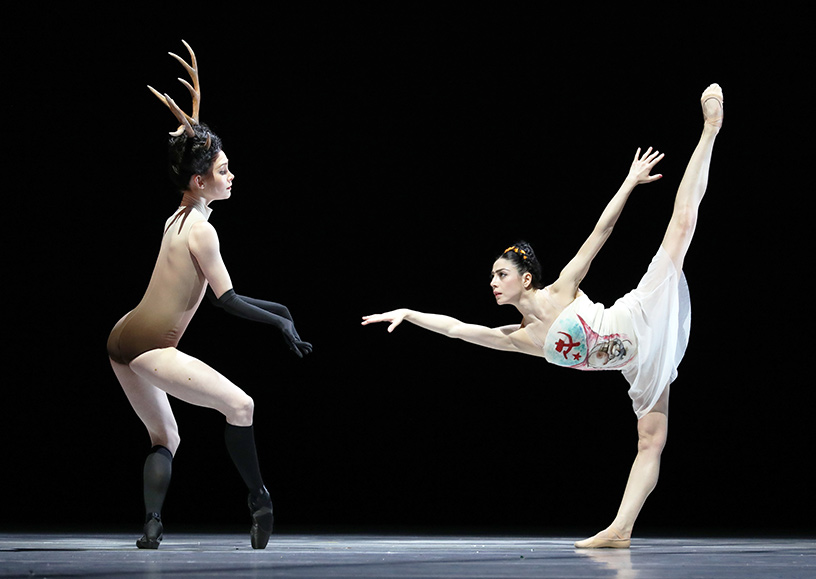
One of the aspects she zoomed in on in her full-length production, much more so than was possible in Broken Wings, was Frida’s loneliness. “She underwent 36 operations during her lifetime, many of which went wrong. For large parts of her life, she was confined to bed and was in continual pain, not only physically. In her final years, she often said there had been two accidents in her life: ‘One was when I was hit by a bus, and the other was my husband. My husband was the worse of the two’. Frida drank a lot and probably took morphine to relieve all the pain. The huge loneliness she must often have felt is expressed in the ballet by an alter ego; a dancer in the role of a deer, inspired by Frida’s painting El venado herido. In this work, she portrays herself with the body of deer, pierced all over by arrows in its chest and back.”
The deer is one of the ten alter egos in Lopez Ochoa’s production, each of which depicts one of Kahlo’s paintings. “Like La columna rota, for example, which is also symbolic of the physical and emotional pain that characterised her life. In the painting, her torso – symbolising her spine that was shattered by a bus accident – is split in two vertically by a broken column, while nails have been hammered into her whole body; a clear reference to Jesus on the cross.”
Bisexual and promiscuous
In Frida, however, Lopez Ochoa did not want to focus only on all the suffering Kahlo endured. “During the preparations for Broken Wings, I talked to a Kahlo connoisseur and that was practically the first thing he said: ‘Please don’t portray her as a victim!’”
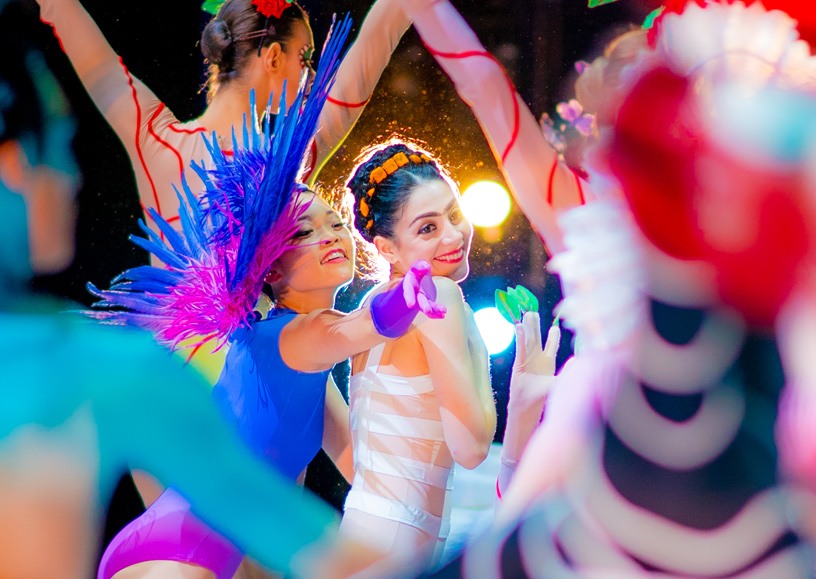
“People often think she was the underdog in the relationship with Diego Rivera, as he often cheated on her, including with her sister Cristina. But the bisexual Frida could give as good as she got. One year after her marriage, she already had an affair with the Hungarian-American photographer Nick Muray, with whom she had an on-off relationship for years, and many other relationships followed in between, including those with sculptor – and set designer for Martha Graham – Isamu Noguchi, revolutionary Leon Trotsky, artist Georgia O’Keeffe, nightclub artiste Josephine Baker and singer Chavela Vargas. I think she was totally fascinated by original and creative people. That might also explain why she fell for Rivera, whom she met at the age of fifteen when he did a wall painting for her school. In her eyes, he must already have been an old man at the time, and certainly not a handsome one. But she was the one who originally made contact. She went up to Rivera and said, ‘You’re mine!’”
Zest for life
Occasionally, Lopez Ochoa has her protagonist, Frida, move like someone with a physical handicap. “Her leg trembles sometimes, she’s regularly confined to her cube, or bed, and at the end you see her limping a bit. But Frida was so much more than just her pain and misfortune. For me, she’s a cumulation of all the colours she surrounded herself with, her paintings and her enormous zest for life, and of the clown who always put everything in perspective and could make direct, pointed jokes about it all. Take, for instance, the totally uncompromising way she portrayed society lady Dorothy Hale in her fall, when she jumped from a tall block of flats in New York. But also the Blue House in Coyoacán (now a district in Mexico City), where she was born and passed away, says a lot about who she was. I’ve visited it three times. It may have been a cage in which she was trapped, due to her physical condition, but it’s a golden cage. It’s so beautiful, with all those colours and plants, and the animals she kept there.”
Dropbox relationship
For Frida, Lopez Ochoa asked British composer Peter Salem, known for his film and theatre music, to expand his composition for Broken Wings into a full-length piece of music. “We’d collaborated four times already, and I always think it’s a great luxury to be able to work with your own composer. During the creative period for Frida, we had a Dropbox relationship, as it were. He kept sending me excerpts, to which I then responded. Although Peter’s written a lot of music for films, in his composition for Frida he made sure the scenes flow into one another really well, and he composed some beautiful recurring motifs for Frida and Diego, among others. He also used guitar and harp, which are typical instruments in Mexican music, even though we deliberately didn’t want it to get too folky.”
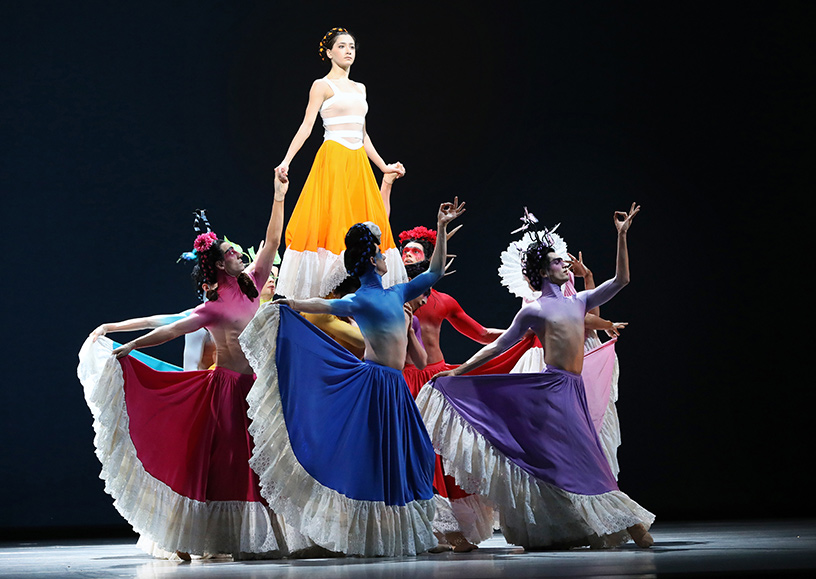
The internationally renowned Dutch designer Dieuweke van Reij designed the sets and costumes for Frida. Lopez Ochoa says, “Actually, I always have a good idea myself of the designs I want, so I didn’t give Dieuweke free rein. But this time, too, she was really good at interpreting my ideas and taking them to a higher level. The production starts off in monochrome tints: black, grey and white. But when Frida discovers painting, everything becomes colourful, apart from the black cube. Besides the bed to which she was confined for so long, this cube also represents a dice. The story in Frida is told by skeletons, who try to get her to make different choices, but the dice rolls as it does – deciding her fate.”
Strong and emancipated
Frida was Dutch National Ballet’s first new full-length production to follow Ted Brandsen’s ballet Mata Hari, which premiered in 2016. “I think it’s fantastic”, says Lopez Ochoa, “that the company has devoted two productions in a row to this type of strong, emancipated and real woman, rather than to an imaginary creature, as so often happened in ballet in the past.”
“I’m also really pleased that through this ballet I’ve been able to share something of my Latin roots, and that after all these years I could finally do so openly and totally without shame. The life of Frida Kahlo, her painting and her way of dressing make for a rewarding subject for a choreographer, as she – just like Mata Hari – was someone who invented herself, as it were. She may have died at the age of forty-seven and led a tragic life, but she left behind so much beauty and – through her attitude to life and the way she transformed her pain into art – she’s still an example to us all.”
Text: Astrid van Leeuwen
Translation: Susan Pond
‘As long as I can paint, I’m happy’
The life of Frida Kahlo
‘As long as I can paint, I’m happy’
Frida Kahlo was born on 6 July 1907 in Coyoacán, on the outskirts of Mexico City. Her father, Guillermo Kahlo, was a German-Hungarian immigrant, and her mother was a mestiza of mixed native and European origin. The Kahlo family lived in a blue house that father Kahlo had built, La Casa Azul – the house where Frida was to pass away in 1954 and which today houses the Museo Frida Kahlo.
At the age of six, Frida got polio, and from then on she limped slightly. After this first setback, Frida seemed to pick up again fairly quickly. She was a good learner and at the age of fifteen she was one of the first girls to be accepted for a prestigious school that would prepare her for university. She planned to study medicine and become a doctor.
Fate
On 17 September 1925, fate struck. The bus taking Frida home from school had a fatal collision with a tram. Several people died in the accident and Frida was severely injured when a large piece of metal ran through her pelvis. In hospital, it turned out she had also broken her collarbone, two ribs, her right leg and her spine. Her right foot was crushed. She underwent a major operation, after which she spent a long time confined to bed in a restrictive plaster corset. It was in this period that Frida started to paint. Using a special easel, she was able to work lying down. Mostly, she painted herself, with the help of a mirror fixed to her bed. Initially, painting was just a way of staving off boredom, but it soon became more serious. Frida studied various art traditions and honed her painting skills.
Communism and Diego Rivera
About two years after the accident, Frida was up and about again, albeit with a lot of pain and permanent physical damage. She strengthened the ties with her old school friends, who were all studying at university and were politically engaged. Through them, Frida discovered Communism, an ideology she was to profess with conviction until the end of her life – initially as a Trotskyist, and later as a fervent Stalinist. She built up a close network of Communist friends and frequented lively parties. On one of these occasions, her path crossed that of Diego Rivera, an artist more than twenty years older than her, who was one of Mexico’s greatest and best-known painters at the time. She had met him once before, as a secondary school pupil, when he was working on a mural at her school, but now everything had changed. Frida decided to show him her own artworks and request his professional opinion. Rivera was impressed and encouraged Frida to carry on painting. Rivera was already married, but the couple soon embarked on a relationship. On 21 August 1929, Frida and Diego got married – a marriage between ‘an elephant and a dove’ was how Frida’s father described it. Shortly after their wedding, the couple moved to Cuernavaca in the south of Mexico, where Diego had accepted a commission for a mural.
Mexican self-awareness
The Mexico in which Frida had grown up had a strong national self-awareness. The Mexican Revolution broke out in 1910, with a rebellion against the rule of dictator Porfirio Díaz. The post-revolutionary period was characterised by a revaluation of the national culture and identity, above those of the (former) European coloniser. The pre-colonial cultures of the Mayans and the Aztecs were rediscovered, and people celebrated their own native traditions and folklore. The country became more self-assured, proud and convinced of the value of its own culture and history.
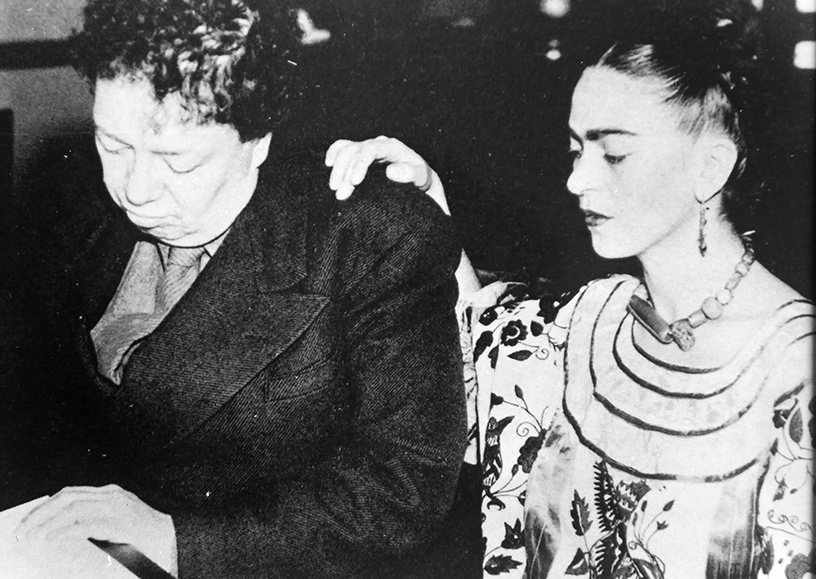
After moving to Cuernavaca, Frida also began to relate to this trend with increasing self-awareness. She studied the matriarchal society of the Tehuanas, who dressed in traditional Tehuana costume. Frida took inspiration from this and transformed her style. Whereas as a young woman she had regularly worn men’s clothes or – out of solidarity with the working class – overalls, from then on she was more often seen in traditional colourful costume, with flowers in her hair. For Frida, it was the ultimate form of self-expression and a way to forge links with her Mexican roots.
America
Diego’s successful career brought the couple to ‘Gringolandia’, as Frida called the United States, where they lived in San Francisco, New York and Detroit, respectively. The marriage between Diego and Frida was characterised by countless affairs on both sides. Diego was an irrepressible womaniser without scruple, but Frida, too, had many affairs with men (including Leon Trotsky and Isamu Noguchi) as well as women (reported to include Georgia O’Keeffe, Josephine Baker, Dolores del Rio, Paulette Goddard, Tina Modotti and Chavela Vargas). From 1931, Frida maintained an on-off relationship with the American photographer Nick Muray that lasted around ten years.
The move to the US was good for Diego’s career, but Frida was not happy there – she disliked Detroit in particular. She experienced the industrial city as xenophobic and oppressive, and discovered that she felt lonely away from her home country, as she had such strong connections with her Mexican roots, both as a person and as an artist.
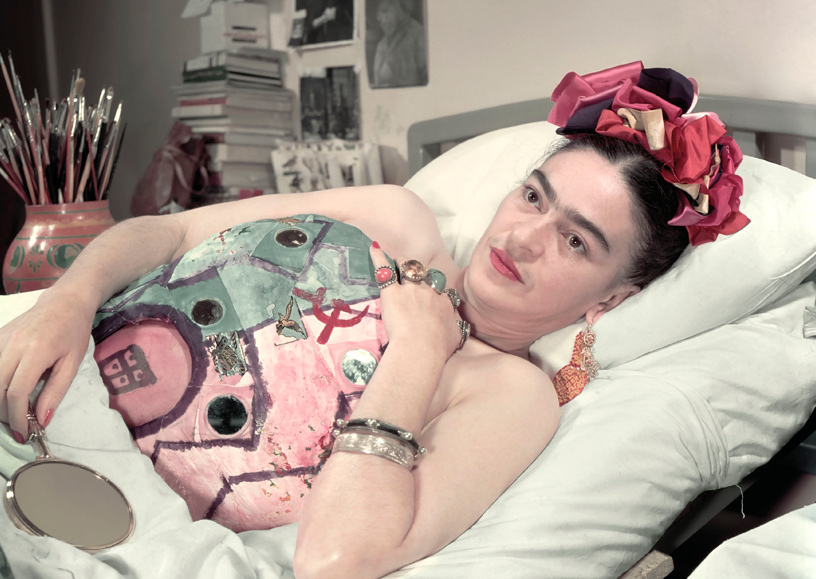
In the summer of 1932, she also had a miscarriage, which affected her so badly she had to be admitted to hospital. The loss of this child touched Frida deeply. She had already had other failed pregnancies and was now convinced that her damaged body was probably not capable of bearing a child to full term. In this period, Frida frequently dealt with her pain regarding this subject in her art. Shortly after losing the child, Frida’s mother also passed away in Mexico, and Frida was increasingly overcome with homesickness for her home country. When Diego created an impossible situation for himself by depicting Lenin on a mural commissioned by the Rockefellers, the couple returned to Mexico City.
Back in Mexico
In Mexico, Frida’s health went rapidly downhill. In 1934, she had other miscarriages, underwent an appendectomy and had some toes of her damaged foot amputated due to gangrene. To top it all, Frida discovered that Diego was having an affair with her younger sister Cristina. She felt completely betrayed by both her loved ones and went to live elsewhere for a time. Shortly afterwards, she moved in with Diego again, although it was far from the last time the couple broke up temporarily.
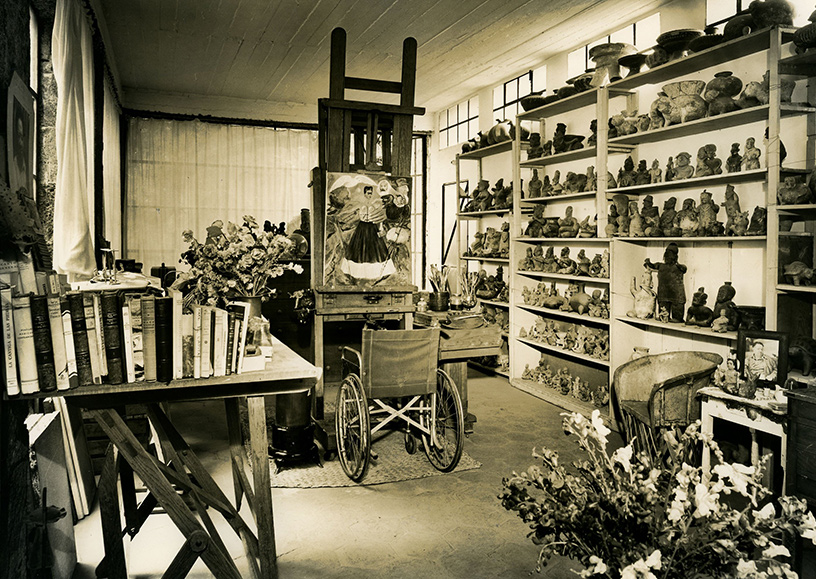
In 1937, through the intercession of Frida and Diego, Mexico granted asylum to Leon Trotsky – former leader of the Russian Revolution, but at that time the most prominent state enemy of Stalinist Russia. The Riveras housed Trotsky and his wife at La Casa Azul, and soon Frida was having an affair with the revolutionary, although it was short-lived.
Not long afterwards, Rivera initiated divorce proceedings. In this period, Frida’s productivity and career boomed. Her work was exhibited in places like New York and Paris, and she gained more and more recognition. She lived and worked at La Casa Azul and was more productive there than ever before.
On 21 August 1940, Trotsky was assassinated on the orders of Stalin, in his study with an ice axe. The perpetrator was an acquaintance of Frida’s, and she was detained on suspicion of being an accomplice and questioned for two days.
Second marriage and declining health
Trotsky’s death brought Frida and Diego closer together again and they remarried on 8 December 1940. After their wedding, Frida’s health deteriorated steadily. In 1945, she underwent a serious operation, whereby a piece of bone reinforced with steel was transplanted into her spine. The difficult operation was unsuccessful, but was repeated later on – in vain.
In this period, Frida regularly put her difficult physical condition into her paintings, which included the poignant The Broken Column. Frida was housebound and confined to a wheelchair. She numbed her physical and mental pain with a strong mix of alcohol and morphine. In 1953, her right leg also had to be amputated to knee height, because of gangrene.
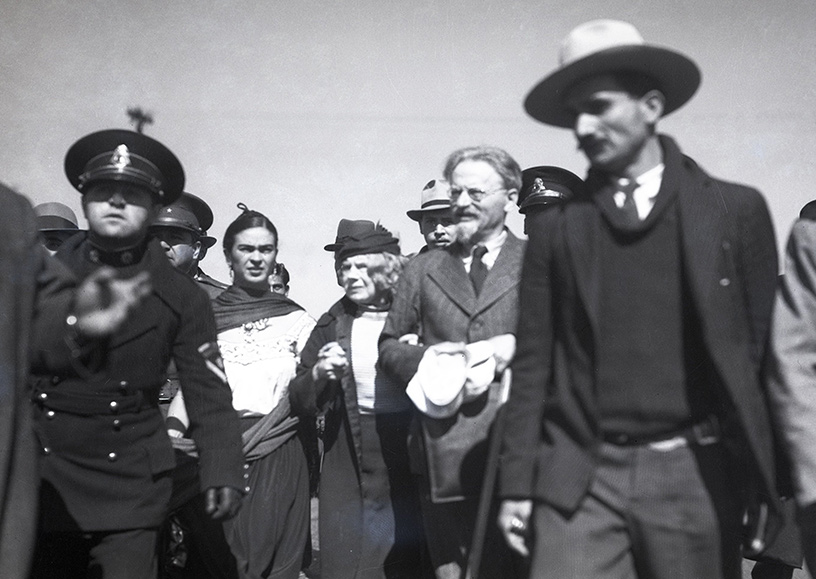
In the final years, the marriage between Frida and Diego was a distant relationship. Rivera was not good at dealing with Frida’s despair, depressions, tantrums and extensive use of alcohol and medication. He started an affair with a woman who was to become his fourth wife, soon after Frida’s death.
One ray of light in this difficult period of Frida’s life was her art. “I’m not ill. I’m broken. But as long as I can paint, I’m happy”, Frida told a journalist during this period. In 1953, the first retrospective of her work was organised in Mexico City. At first, it looked like the bedridden Frida would not be able to attend the opening, but to everyone’s surprise she got herself taken to the exhibition – bed and all – where she was the centre of attention and admiration.
On 13 July 1954, Frida Kahlo passed away in the early morning, officially from the effects of pneumonia, which may, however, have been helped along by an overdose of medication. Her coffin was adorned with a large Communist flag.
Not just illustrations
Frida Kahlo incorporated many biographical elements into her art, such as her love for Diego, her misery regarding his affairs, her many miscarriages, her physical pain and her love of Mexico. Yet her paintings are so much more than just illustrations of her own life. In a poetic and lively way, Frida’s art expresses feelings and experiences that are not just individual, but also universal. After her death, Frida became a role model for women’s and lhbtq+ movements, who recognised in her life story and her art an expression of courage, militancy and sadness. Frida turned herself into an artwork; an icon that surpassed her own life and is imbued with a perpetual power of expression.
Text: Laura Roling
Translation: Susan Pond
‘Thinking in possibilities rather than impossibilities… that’s Frida’
Interview with Dieuweke van Reij
‘Thinking in possibilities rather than impossibilities… that’s Frida’
Down from the flies comes a huge bundle of red, braided ropes; 10 metres long and 7 centimetres thick. There’s a whole bus made out of wire, and a tram, cars and bikes, and the stage is dominated by a cube that can be moved around by the dancers. No fewer than 49 dancers are involved, including 17 ‘skeletons’, and Kahlo’s self-portraits are brought to life by ten male dancers in colourful long skirts, each wearing a unique, sculptural wig.
These are just a few items from the enormous list of props for Frida, for which Dieuweke van Reij (1979) designed both the sets and costumes. She was involved in the project right from the start, and she also worked closely with Annabelle Lopez Ochoa on Broken Wings, in London. They’ve known one another a long time. After graduating, Van Reij ended up, through her job as a designer with Orkater, with the company De Fantasten, where she was part of the core artistic team, along with Lopez Ochoa.
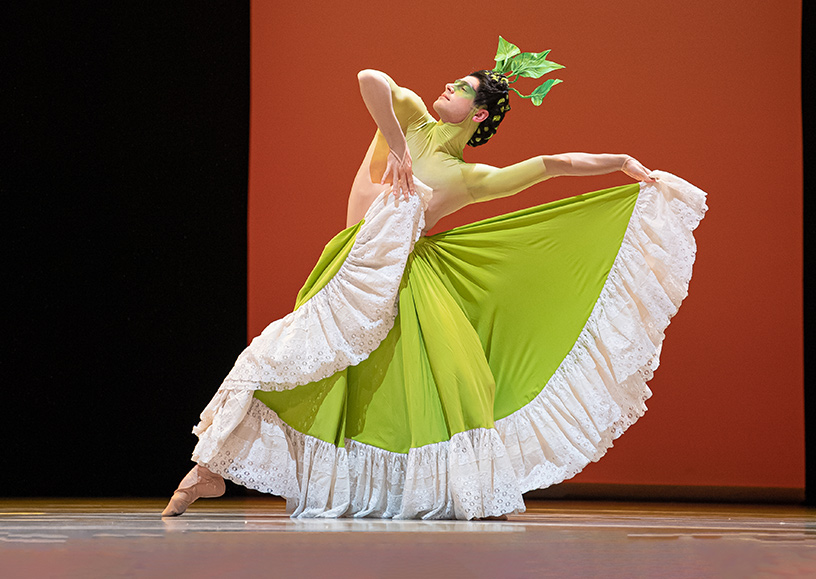
For Frida, practically everything was made from scratch. The production is on a much larger scale than Broken Wings, and the stage of Dutch National Opera & Ballet is considerably bigger as well. Van Reij is at home here, as on graduating she started off her career as a purchaser for Dutch National Opera and then as a dresser and assistant with Dutch National Ballet’s costume department. “I learnt a lot there, as you immediately get to see all the aspects of a large-scale production from the inside. I also began designing for smaller companies, where you have to do everything yourself: sewing, purchasing, welding and painting. I now work mainly abroad for the larger opera houses and theatres, but I still really enjoy alternating between large-scale and small-scale works. So one time on the red carpet, and the next at Oerol in the sand dunes.”
Fighting power and zest for life
Van Reij was already familiar with Frida Kahlo’s self-portraits. “I thought her work was a bit gloomy and unsettling, and not very beautiful as such. But through studying her – by watching the film Frida and reading her diaries –, I came to really love her. Her diary entries are accompanied by lots of drawings. It’s very dreamlike; almost harrowing. And there are some excellent documentaries about her, where you see more of the spirit of the times: the colours, the clothing, the culture and the surroundings; a time of dictatorship, violence and revolution. As you get to know more about her life, you realise how much fighting power and zest for life Frida must have had. She was in pain throughout her life, due to the paralysis in her leg and because of the bus accident. In addition, she had three miscarriages that had a huge impact on her life – she really wanted children – and a very complex marriage. Over time, she started to dress and behave more and more extremely, in order to disguise her physical shortcomings. As a child, she already played with gender – she liked to wear men’s suits – and she increasingly made herself into an artwork à la Lady Gaga or Madonna; larger than life.
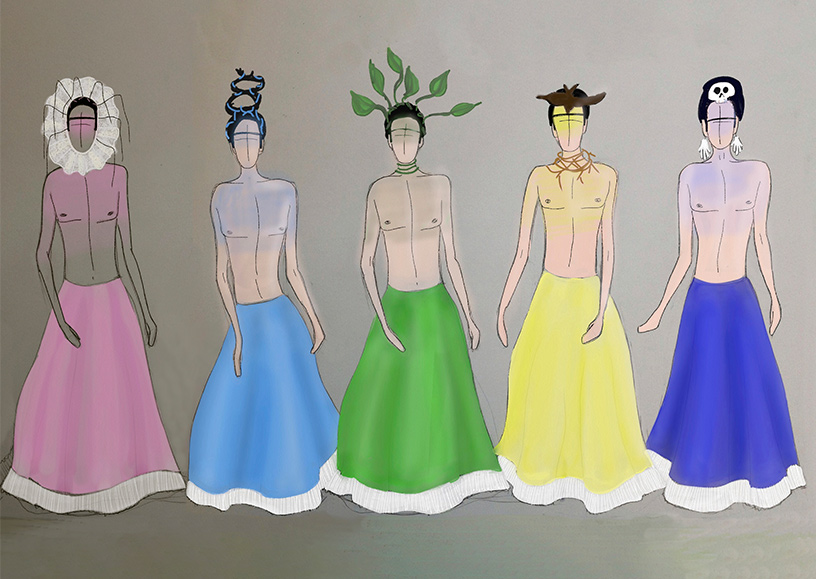
In her art, she created a world that gave her an artistic, physical and emotional freedom she didn’t have in ‘normal’ life. That inspired us to make exuberant, colourful designs. For me, the biggest challenge was to convey the energy of her work, without merely copying her paintings. I make use of elements and colours from her work, iconic images and Mexican influences, and especially the energy of Frida as a person, artist and woman. ‘Viva la vida’, or ‘Celebrate life’! That’s what Frida means to me.”
From pointe shoes to corset
“At the start of the performance, we see Frida as a young, playful and cheeky girl, dressed in school uniform. After ending up in hospital after a road accident, at the age of eighteen, she no longer dances on pointe, as that’s impossible for the rest of her life. You see her strapped into a corset, with very limited freedom of movement. It’s only later in her life that she starts wearing Mexican clothes more often, with long skirts and extravagant jewellery. Particularly after her time in New York, she’d had enough of the West, and of stones and cities. She longed more and more for nature, and moved back to the Mexican countryside.”
Self-portraits
“Her self-portraits are iconic. They’re intimate, autobiographical and confrontational versions of her deeper self. We’ve chosen a number of elements to bring her self-portraits to life on stage. Ten male dancers dance in brightly coloured skirts, each representing one of these self-portraits. As they make their entrance as a group, I chose for a strong style for each of them; with an assortment of details in the wigs. There’s a lot of handiwork involved in them. One wig, for example, has lots of small leaves, and another has flowers. A third one incorporates a skull, and butterflies appear to be growing from another. For some wigs, the hair is mixed with strips of fabric from the costumes, while others have shapes entwined in them, like antlers, made of light foam. For each of them, we focus on a single element. It was quite a puzzle, as of course the wigs have to stay in place and not get in the way of the dancing or partnering.”
Red threads
“In Kahlo’s work, you often see red threads running from heart to heart, connecting some characters or even wrapped dangerously around her neck. In the designs and the choreography, we make use of them: sometimes the red threads literally stand for blood, menstruation and miscarriages, but they also symbolise the connection Frida felt to her body and to her loved ones.”
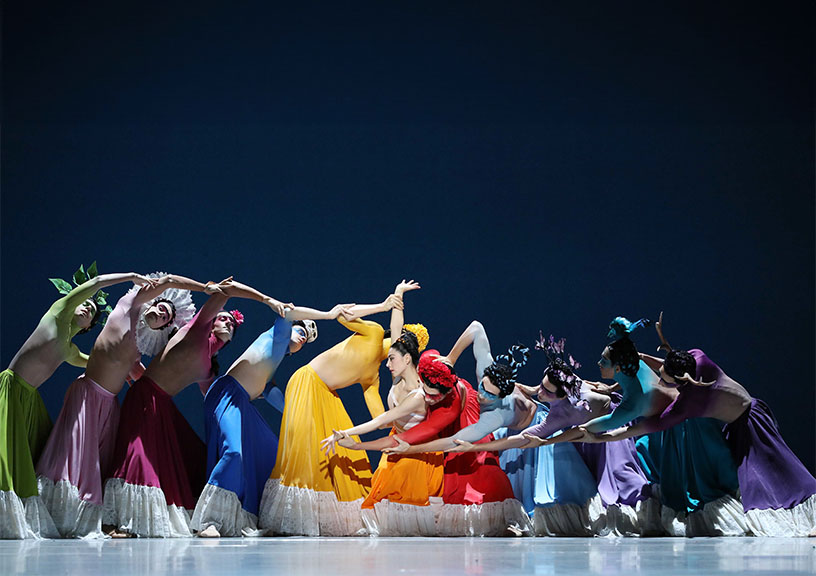
At the centre of the stage is a cube. Kahlo was bedridden for much of her life. “In a ballet, of course, you can’t do a lot with someone lying down, so we show her bed in a vertical position inside a cube. One advantage of a cube – which can be moved around by the dancers – is that you can show different pictures on all four sides. In the end, it even became two cubes.”
Skeletons
For the scenes in New York, Van Reij designed a number of buildings, which were then constructed in the Scenery Atelier. “It was exciting to work on them. Sometimes we were really inventing together: what sort of paint do you use, and which technique? How do you make it as expressive as possible?” During the performance, these buildings are pushed onto the stage from the wings by some ‘skeletons’ – including four soloists – who drive the story along, as it were, as well as adding a humorous touch. “In Broken Wings, there were only four, but now there are seventeen. We chose them because skeletons and skulls feature a lot in Mexican culture, and therefore also in Frida’s work. In Mexico, the attitude to death is totally different. Death is celebrated instead of feared, as it is here. Every year, the dead are remembered big time on the ‘Día de los Muertos’, or the Day of the Dead.
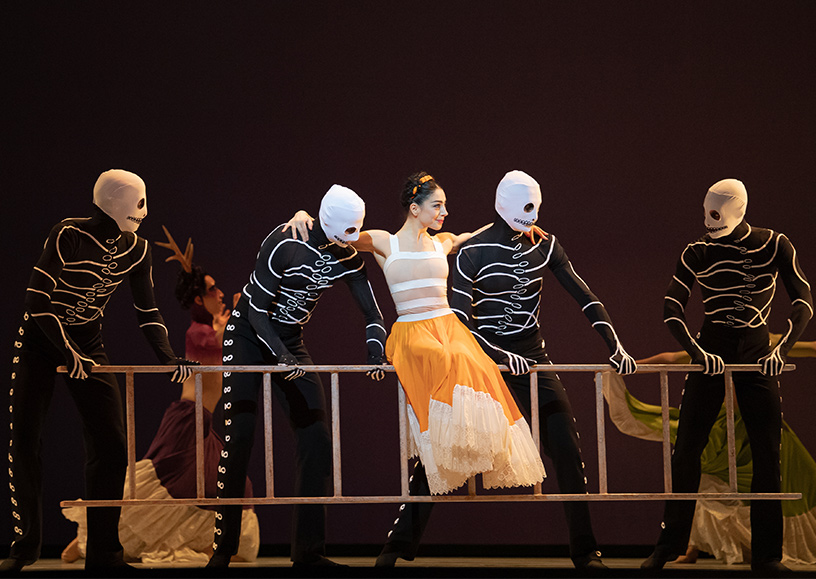
In the performance, the seventeen skeletons also have the job of moving the buildings and other objects. For example, we show an abstraction of the accident, with a tram, a bus, cars and bikes made of wire. The vehicles are very thin and fine, but they’re made of three-centimetre-thick solid aluminium, which had to be twisted into small loops. It was impressive to see how they were made in the Scenery Atelier.”
Mural
Frida Kahlo met Diego Rivera when he was 40 and she was 21. She married him and spent many years in the shadow of the famous Mexican artist. He was a member of the Communist party and known mainly for his murals that reflect the lives of the working class, particularly those of the native Mexican population. The mural he made on commission from the Rockefeller family in New York, Man at the Crossroads (1934), created a furore, because he had painted a portrait of Lenin in it. He refused to alter the portrait, following which he was thrown out of New York and the Rockefellers destroyed the mural. “We thought we should include something of his in the ballet. So at a certain point the buildings representing New York and America in general turn around, and you see Diego’s mural – at least my interpretation of it.”
Wings
“Designing for dance requires different tactics to designing for opera or drama. Everything is in constant motion, which demands a different approach on both the artistic and the practical level. The scenery is part of the choreography: wings have to sprout from the female dancers’ backs as big and beautiful as in my dreams, but they have to be light and pliable, so that not only do they look natural and organic, but they also feel like that for those wearing them. Thinking in possibilities rather than impossibilities… that’s Frida. To put it in her words: ‘Feet, what do I need them for? I have wings to fly’.”
Text: Margriet Prinssen
Translation: Susan Pond
Programmaboek
Become a Friend of Dutch National Ballet
As a Friend, you support the dancers and makers of Dutch National Ballet. You are indispensable to them and we are happy to do something in return. For Ballet Friends we organize exclusive activities behind the scenes. You will receive the Friends magazine from us and you will receive priority when ordering tickets.
